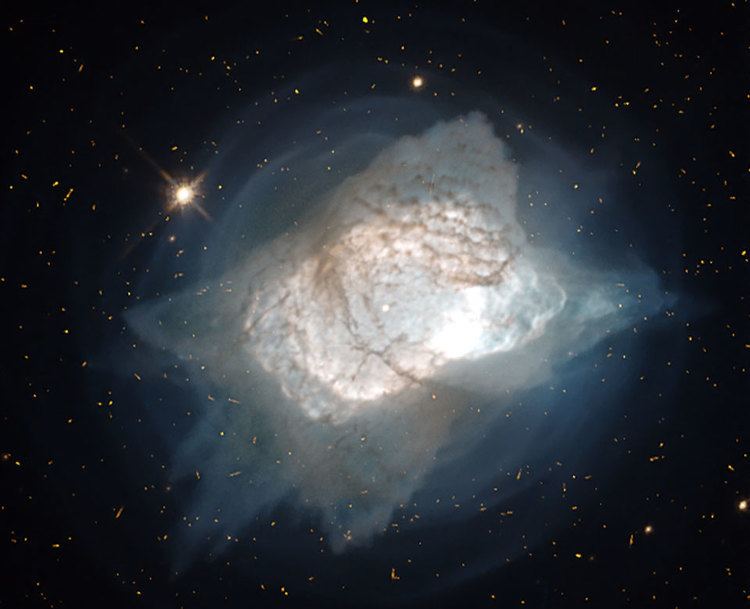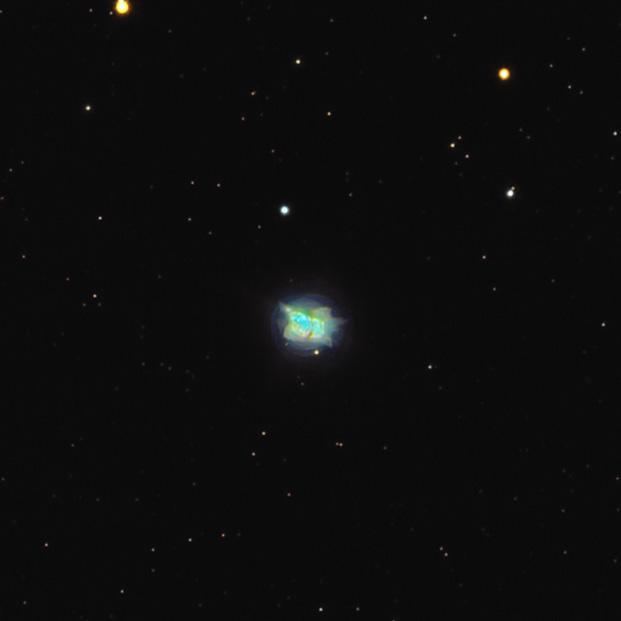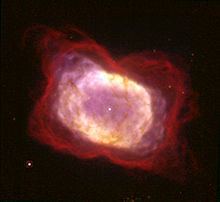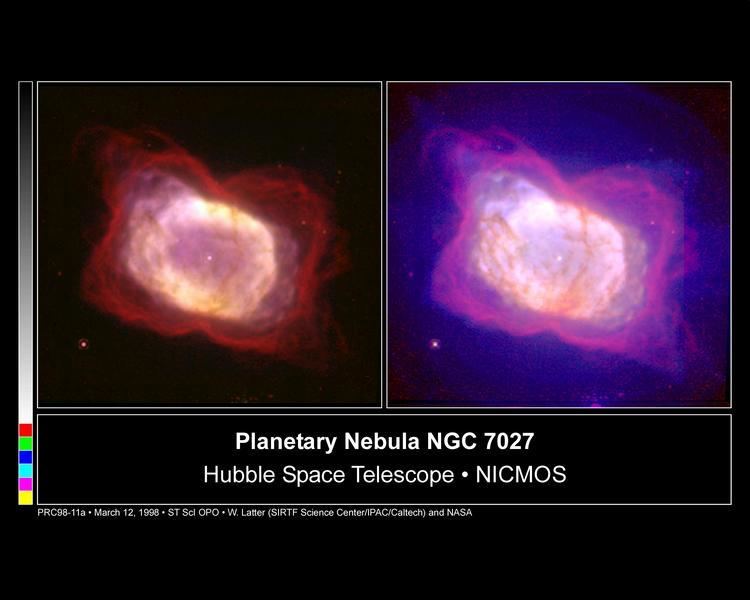Right ascension 21 7 1.7 Distance 3,000 ly Radius 14,000 AU ly | Declination +42° 14′ 11″ Apparent dimensions (V) 14" Magnitude 10 Apparent magnitude (V) 10 | |
 | ||
Similar NGC 6826, NGC 7026, NGC 7008, Saturn Nebula, Egg Nebula | ||
Mz 3 bd 30 3639 hen 3 1475 ngc 7027 planetary nebulas
NGC 7027 is a very young and dense planetary nebula located around 3,000 light-years (920 pc) away in the constellation Cygnus. It was discovered in 1878 by Édouard Stephan, using the 31 inch reflector at Marseille Observatory. It is one of the smallest planetary nebulae, and by far the most extensively studied.
Contents
- Mz 3 bd 30 3639 hen 3 1475 ngc 7027 planetary nebulas
- 2013 8 26 ngc 7027 astronomy picture of the day
- References
NGC 7027 is one of the visually brightest planetary nebulae. It is about 600 years old.
It is unusually small, measuring only 0.2 by 0.1 light-years whereas the typical size for a planetary nebula is 1 light-year. It has a very complex shape, consisting of an elliptical region of ionized gas within a massive neutral cloud. The inner structure is surrounded by a translucent shroud of gas and dust. The nebula is shaped like a prolate ellipsoidal shell and contains a photodissociation region shaped like a "clover leaf". NGC 7027 is expanding at 17 kilometers per second (11 mi/s). The central regions of NGC 7027 have been found to emit X-rays, indicating very high temperatures. Surrounding the ellipsoidal nebula are a series of faint, blue concentric shells.

It is possible that the central white dwarf of NGC 7027 has an accretion disk that acts as a source of high temperatures. The white dwarf is believed to have a mass approximately 0.7 times the mass of the Sun and is radiating at 7,700 times the Sun's luminosity. NGC 7027 is currently in a short phase of planetary nebula evolution in which molecules in its envelope are being dissociated into their component atoms, and the atoms are being ionized.

The expanding halo of NGC 7027 has a mass of about three times the mass of the Sun, and is about 100 times more massive than the ionized central region. This mass loss in NGC 7027 provided important evidence that stars a few times more massive than the Sun can avoid being destroyed in supernova explosions.

NGC 7027 has a rich and highly ionized spectrum caused by its hot central star. The nebula is rich in carbon, and is a very interesting object for the study of carbon chemistry in dense molecular material exposed to strong ultraviolet radiation. The spectrum of NGC 7027 contains fewer spectral lines from neutral molecules than is usual for planetary nebulae. This is due to the destruction of neutral molecules by intense UV radiation. The nebula contains ions of extremely high ionization potential. NGC 7027 is a promising place to look for HeH+, a molecule which is believed to exist in interstellar space, but which has never been conclusively identified. There is evidence for the presence of nanodiamond in NGC 7027.

It was photographed by the Hubble Space Telescope in 1996. Prior to these observations, NGC 7027 was thought to be a proto-planetary nebula with the central star too cool to ionize any of the gas, but it is now known to be a planetary nebula in the earliest stage of its development. The central star is believed to have been about 3–4 times the mass of the Sun.

In a 6" telescope at around 50x it appears as a relatively bright bluish star. At magnifications around 180x a vaguely ursine shape has led to the epithet of the "Gummy Bear Nebula". It is best viewed with the highest magnification possible.
